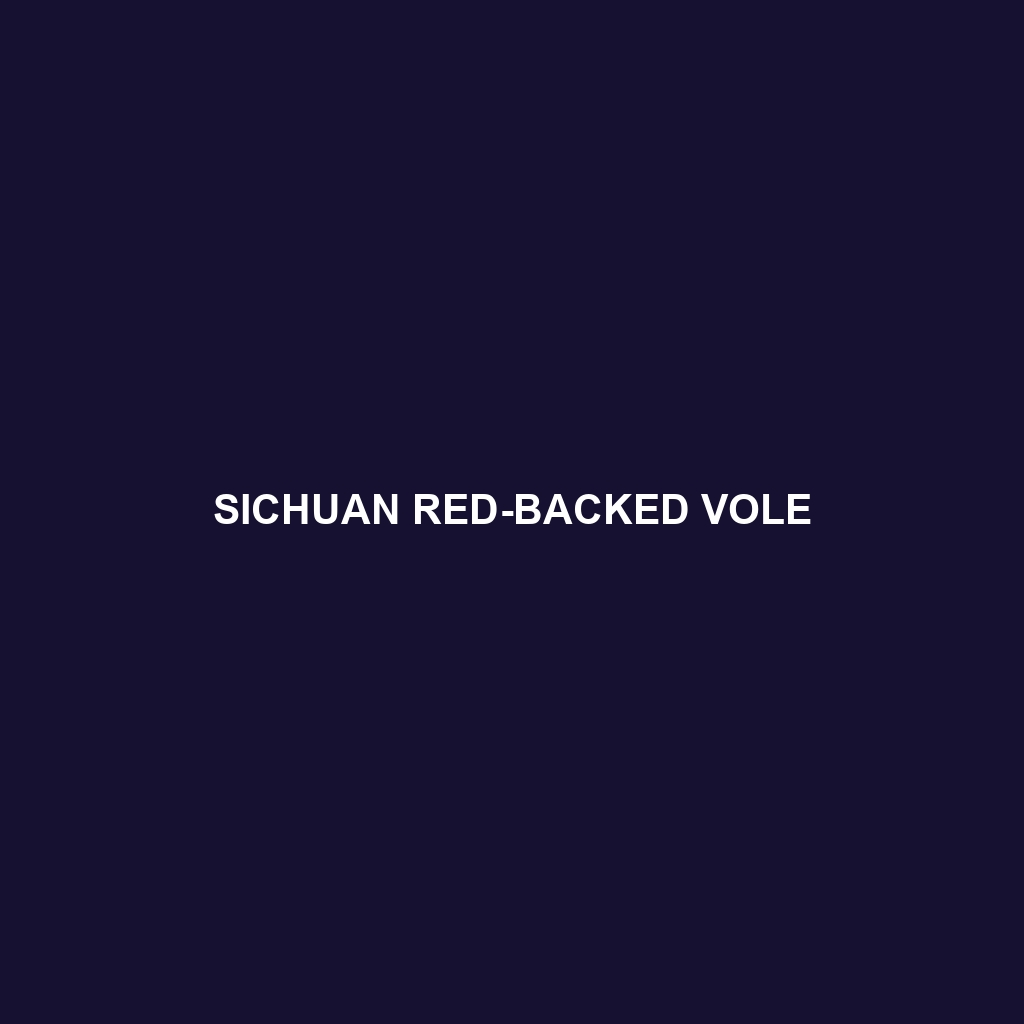Sichuan Red-backed Vole
Common Name: Sichuan Red-backed Vole
Scientific Name: Eothenomys miletus
Habitat
The Sichuan Red-backed Vole is primarily found in the mountainous regions of southwestern China, specifically in Sichuan province. It inhabits moist, wooded areas, typically at elevations ranging from 2,500 to 4,000 meters. This species prefers dense underbrush and forest edges, where it can find shelter and foraging opportunities. The vole is also associated with alpine meadows and grasslands, thriving in environments with plenty of leaf litter and vegetation cover.
Physical Characteristics
The Sichuan Red-backed Vole is a small rodent, measuring approximately 8 to 11 centimeters in body length, with an additional tail length of about 7 to 9 centimeters. Its distinctive coloration features a rich reddish-brown dorsal area, contrasting with a cream-colored belly. This species has a rounded body shape, short legs, and small ears, which are adapted for a life mainly spent near the ground. The soft, dense fur provides insulation against the cold mountain climates.
Behavior
Sichuan Red-backed Voles are primarily nocturnal creatures, exhibiting peak activity during the night. They are known for their burrowing habits, creating complex tunnel systems in which they live and store food. These voles are also highly social, often seen foraging in pairs or small groups. They communicate with each other through a variety of vocalizations and scent markings, making them interesting subjects for behavioral studies.
Diet
The diet of the Sichuan Red-backed Vole consists mainly of herbaceous plants, seeds, roots, and fungi. They are particularly fond of tender leaves and will often clip plants at the base to facilitate feeding. This herbivorous diet not only supports their energy needs but also plays a crucial role in the ecosystem by aiding in seed dispersal.
Reproduction
Sichuan Red-backed Voles breed from late spring to early autumn, with peak reproduction occurring during the summer months. Females typically give birth to a litter of 3 to 6 young after a gestation period of about 20 to 25 days. The young are precocial, developing quickly and becoming independent within a few weeks. Parental care is prominent, with females actively training their offspring in foraging techniques.
Conservation Status
The Sichuan Red-backed Vole is currently classified as ‘Vulnerable’ on the IUCN Red List due to habitat loss from deforestation and agricultural expansion. Conservation efforts are crucial to preserving its natural habitats and ensuring the long-term survival of this unique species.
Interesting Facts
One fascinating aspect of the Sichuan Red-backed Vole is its ability to adapt to harsh alpine environments, showcasing exceptional resilience. These voles are not only vital for their ecosystems but also serve as an indicator species, reflecting the overall health of their mountainous habitats.
Role in Ecosystem
The Sichuan Red-backed Vole plays a significant role in its ecosystem as both a herbivore and prey species. By consuming a variety of plants, it helps maintain vegetation balance and contributes to soil health through its burrowing activities. Additionally, they serve as an important food source for various predators, thereby supporting the local food web and biodiversity.
